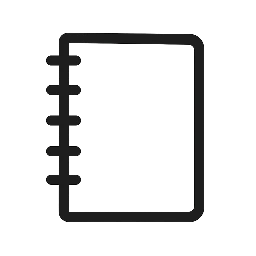Grass weed and feed is a lawn care product designed to both fertilize grass and control weeds in one application. It simplifies lawn maintenance by combining nutrients that promote grass growth with herbicides that target common broadleaf weeds. This dual function saves time and effort compared to applying fertilizer and weed killer separately.
Choosing the right grass weed and feed product depends on factors like grass type, weed species, and the time of year. Proper use ensures healthier grass and fewer weeds without damaging the lawn. Understanding how it works can help homeowners maintain a balanced, attractive lawn with less hassle.
Understanding Grass Weed and Feed
Grass weed and feed combines fertilizers with herbicides designed for lawn care. It targets unwanted weeds while supplying nutrients that promote lawn growth. Different formulations cater to various grass types and weed problems.
What Is Grass Weed and Feed?
Grass weed and feed is a lawn treatment product that simultaneously controls weeds and fertilizes grass. It is applied directly to lawns to kill common weeds like dandelions and crabgrass. At the same time, it delivers essential nutrients such as nitrogen and phosphorus.
Its dual-action design saves time and effort compared to using separate products. The product is usually granular or liquid and intended for seasonal use. Proper application timing is crucial for maximizing effectiveness without damaging the lawn.
Key Ingredients and How They Work
The main components include herbicides and fertilizers.
Herbicides selectively target broadleaf and grassy weeds without harming the lawn grass. Common active ingredients include 2,4-D, dicamba, and MCPP.
Fertilizers supply nitrogen, phosphorus, and potassium in balanced amounts. Nitrogen enhances growth and green color, phosphorus supports root development, and potassium improves overall lawn health.
These ingredients are combined to promote healthy grass growth while controlling or eliminating weeds.
| Ingredient Type | Purpose | Examples |
| Herbicides | Weed control | 2,4-D, dicamba, MCPP |
| Fertilizers | Nutrient supply for grass | Nitrogen, phosphorus, potassium |
Types of Grass Weed and Feed Products
Products vary based on lawn type and weed targets.
- For Cool-Season Grasses: Formulas suited for fescue, bluegrass, and ryegrass.
- For Warm-Season Grasses: Made for Bermuda, St. Augustine, and zoysia.
- Liquid vs. Granular: Liquid spreads quickly but may require more care in application. Granular versions release nutrients more slowly.
- Seasonal Formulas: Some designed specifically for spring or fall use to match grass growth cycles.
Choosing the right product depends on grass species and the specific weed issues present.
Benefits for Lawn Health
Using grass weed and feed promotes a thicker, greener lawn by reducing weed competition. Removing weeds frees resources like water and nutrients for grass growth.
The fertilizer portion supports sustained growth, root strength, and disease resistance. This integrated approach helps maintain lawn vigor, reduces the need for multiple treatments, and can improve overall lawn appearance.
Application and Best Practices
Proper application, timing, and safety are crucial for the effective and responsible use of grass weed and feed products. Users must follow specific steps to maximize lawn health and minimize risks to people and the environment.
How to Apply Grass Weed and Feed
Before application, lawns should be mowed and free of debris. The soil should be dry, but watering the lawn 24 hours before application can help with nutrient absorption.
Use a spreader for even distribution, adjusting the settings according to the product label. Walk at a steady pace to avoid overlapping or missing areas.
After applying, avoid watering the lawn for at least 24 hours to let the herbicide work effectively. Use gloves and clean equipment after use.
Timing and Frequency of Use
Apply grass weed and feed products during the active growing season, typically spring or early fall, when weeds are young and grass growth is robust.
Most products recommend one to two applications per year. Overuse can stress the lawn and lead to chemical resistance in weeds, so always follow label instructions.
Avoid application during drought or extreme heat, as this can damage grass and reduce herbicide effectiveness.
Safety Tips and Environmental Considerations
Wear protective gear such as gloves, goggles, and long sleeves to prevent skin and eye contact with chemicals. Keep children and pets off the treated area until it is dry.
Prevent runoff by applying only on calm days without rain in the forecast. Avoid spraying near water sources or storm drains.
Store unused product securely, away from animals and children, and dispose of containers according to local regulations.


Leave a Reply